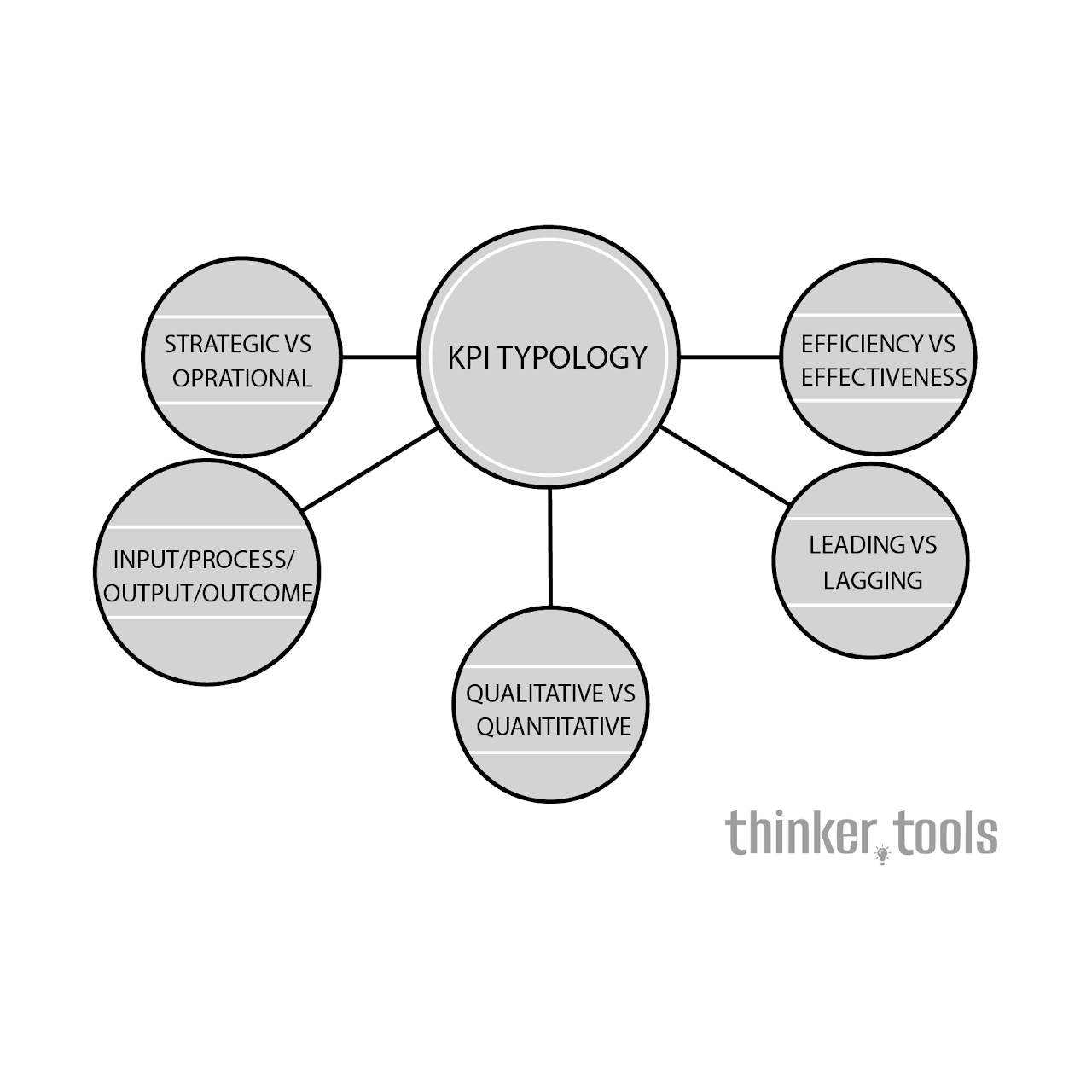
What are KPI Types?
KPIs are quantifiable measurements that demonstrate how effectively an organization is achieving its key business objectives. Different types of KPIs serve different purposes:
- Quantitative KPIs: Numerical measurements (sales figures, revenue)
- Qualitative KPIs: Descriptive characteristics (customer satisfaction ratings)
- Leading KPIs: Predictive measures that indicate future performance
- Lagging KPIs: Historical measures that show past performance
- Input KPIs: Measure resources invested
- Output KPIs: Measure results produced
- Process KPIs: Measure efficiency of operations
The History and Origin
The concept of KPIs evolved from the broader field of performance management. While businesses have always tracked performance, the formal KPI framework emerged in the 1960s with the rise of management by objectives (MBO). The balanced scorecard approach, introduced by Kaplan and Norton in the 1990s, further refined how organizations categorize and use different types of KPIs to create a comprehensive view of performance.
How to Use Different KPI Types: Step by Step
Step 1: Define Your Strategic Objectives
Before selecting KPIs, clearly articulate what you're trying to achieve. Your objectives determine which KPI types are most relevant.
Step 2: Map KPIs to Objectives
For each objective, identify which type of KPI best measures progress:
Quantitative vs. Qualitative
- Use quantitative for measurable outcomes (revenue, units sold)
- Use qualitative for subjective assessments (brand perception, employee morale)
Leading vs. Lagging
- Use leading indicators to predict and influence future outcomes
- Use lagging indicators to confirm whether strategies worked
Input vs. Output vs. Process
- Input KPIs track what you invest (budget, hours, resources)
- Output KPIs measure what you produce (products, services, results)
- Process KPIs monitor how efficiently you operate (cycle time, error rates)
Step 3: Create a Balanced KPI Portfolio
Don't rely on a single type. Combine different KPI types for a comprehensive view:
- Mix leading and lagging indicators
- Balance quantitative with qualitative measures
- Include input, process, and output metrics
Step 4: Set Targets and Benchmarks
For each KPI, establish:
- Current baseline performance
- Realistic improvement targets
- Industry benchmarks for comparison
Step 5: Implement Measurement Systems
Ensure you have the tools and processes to accurately capture data for each KPI type.
Step 6: Regular Review and Adjustment
KPIs should evolve with your business. Regularly assess whether your KPI types still align with strategic priorities.
Practical Examples
Example 1: Sales Team Performance
Leading Indicators:
- Number of sales calls made (input KPI)
- Pipeline value (process KPI)
- Customer engagement score (qualitative KPI)
Lagging Indicators:
- Revenue generated (output KPI)
- Close rate percentage (quantitative KPI)
- Customer lifetime value (output KPI)
Example 2: Manufacturing Efficiency
Input KPIs:
- Raw material costs
- Labor hours invested
- Energy consumption
Process KPIs:
- Production cycle time
- Defect rate
- Equipment utilization rate
Output KPIs:
- Units produced
- On-time delivery rate
- Product quality score
Example 3: Customer Service Excellence
Qualitative KPIs:
- Customer satisfaction score (CSAT)
- Net Promoter Score (NPS)
- Service quality ratings
Quantitative KPIs:
- Average response time
- First contact resolution rate
- Tickets processed per agent
Leading Indicators:
- Training hours completed
- Knowledge base usage
- Employee engagement scores
Benefits and Life Improvements
Strategic Clarity
Different KPI types illuminate different aspects of performance. This comprehensive view prevents blind spots and ensures you're not optimizing one area at the expense of others.
Predictive Power
Leading indicators give you the power to influence outcomes before they happen. Instead of reacting to problems, you can prevent them.
Balanced Decision Making
By using multiple KPI types, leaders make more informed decisions that consider both short-term results and long-term sustainability.
Resource Optimization
Input and process KPIs help identify inefficiencies, allowing organizations to achieve more with less.
Continuous Improvement Culture
A well-designed KPI framework using multiple types creates a culture of measurement and improvement throughout the organization.
Early Warning System
The combination of leading and lagging indicators creates an early warning system for potential problems, allowing proactive intervention.
Stakeholder Communication
Different stakeholders care about different KPI types. Having a comprehensive set improves communication with investors, employees, and customers.
Transform Your Performance Management
Understanding and implementing different KPI types transforms performance management from a backward-looking exercise into a forward-thinking strategic tool. By carefully selecting and balancing various KPI types, you create a performance measurement system that not only tracks where you've been but illuminates where you're going. Start by auditing your current KPIs—are you over-relying on one type? Are you missing critical perspectives? Build a balanced portfolio of KPI types, and watch as your organization gains the clarity and control needed to achieve exceptional results. Remember, the goal isn't to measure everything, but to measure the right things in the right ways.